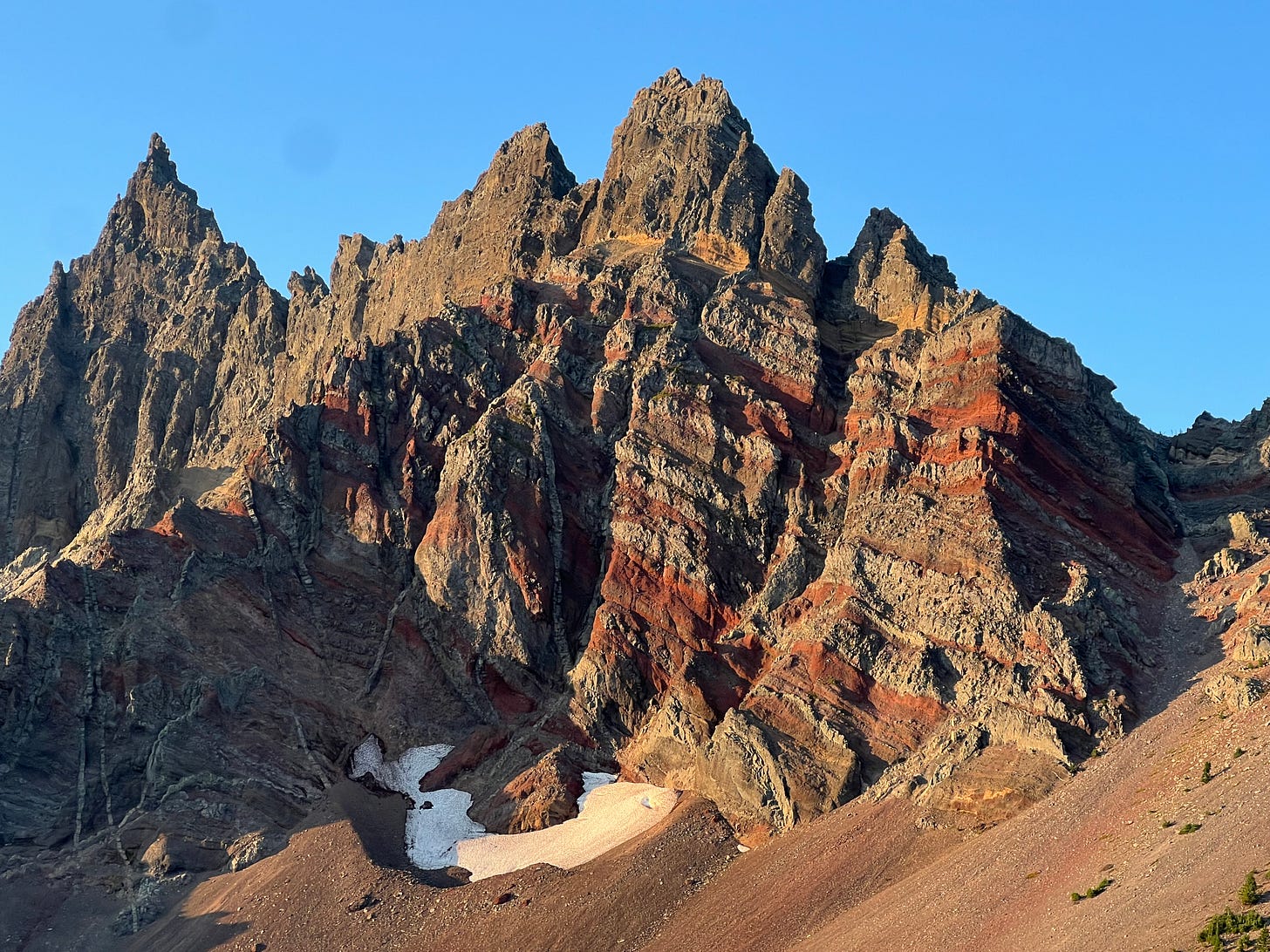2025's third Q&A
From musician Mat Kearney to float planes to wineries, we have the answers for you

Q. At 7,834 feet, Three Fingered Jack is a lofty peak. What does it rank among the state’s highest mountains?
A. Only 99th, according to summitpost.org.
Q. I’ve seen old streetcar tracks on Columbia Avenue in Eugene. Where else did such lines run?
A. From 1907 to 1912, lines were built in four neighborhoods: Fairmont (including the Columbia tracks), Blair, College Crest and West Springfield. When Eugene became known as a “dry” town for a few years, the latter was a popular route for Eugene men who drank in Springfield and returned home. “Saturday night drinking parties were so popular in Springfield that a two-car ‘drunken special’ ran at midnight, when bars closed,” wrote Laurence Aurbach, a former Eugene resident who researched the streetcar lines. “A sheriff was stationed in each car to prevent harassment of women.”
Q. Back in the early 1970s, there was a different ice cream place where Prince Puckler’s is now, at East 19th Avenue and Agate Street. Do you know what it was called?
A. Gantsy’s. The shop became Prince Puckler’s in 1975.
Q. If, as you wrote in a recent column, you and your brother-in-law were the first two hikers atop California’s 14,505-foot Mt. Whitney on Aug. 12, the highest point in the Continental U.S., can it be said that nobody in the lower 48 states was higher than you that morning?
A. Hadn’t thought of that, but in a manner of speaking, yes. We were the first two to sign the register; we reached the top at about 5:30 a.m. I took my first photo from atop at 5:36 a.m. My first photo that included someone besides us was taken at 6:01 a.m. We did not see anyone coming back down from the summit trail as we headed up, so unless someone arrived and left via some other route, without signing in, I think we were, on that date, higher than anyone else in the Continental U.S. for about half an hour! (Not counting, of course, people who were aboard aircraft!)
Q. Mat Kearney, the Eugene-bred musician who is playing the Hult Friday night and whose song “Coming Home (Oregon)” is played between the first and second quarters of Oregon home football games: Did he play football in high school?
A. Nope. He played soccer at South Eugene High and, by most accounts, was good.
Q. When did the first Ferry Street Bridge span the Willamette River, making ferry travel no longer necessary?
A. A long, covered bridge opened in 1876, replaced by a steel span in 1913.
Q. What is Oregon’s rank among other states in terms of the number of wineries?
A. With 874, it ranks second. California is first with — are you sitting down? — 4,864. This, according to a 2025 WineBusiness Analytics report.
Q. Any idea what indigenous peoples called the Three Sisters mountains?
A. ChatGPT says: “While some resources suggest the collective name Klah Klahne may have been a Native American name for the Three Sisters, it’s difficult to find a definitive single name due to the loss of Indigenous languages and the fact that different tribes may have had different names. The European names Faith, Hope, and Charity are associated with the North, Middle, and South Sisters, respectively.”
Q. When I attended school at UO in the late 1960s and early ’70s, there was an FM rock station that burst on the scene, run, as I recall, by some unpaid UO students. I’ve forgotten its name. Can you help?
A. Sounds like KZEL, which had been a religious station until bought by George Zellner and entrusted to four rock-zealous UO students in 1969. “The FM industry in 1969 was agricultural reports from South America, classic music and Muzak,” said one of the students, Gary Palmatier, in the book Pioneer Mikes: A History of Radio and Television in Oregon, “and they wanted to make KZEL-FM a seminal force in the underground FM movement.”
Q. I was driving on Highway 126 when a float plane flew overhead and landed on Fern Ridge Lake. Can anyone land a float plane on Fern Ridge? Does it require special permission?
A. Dustin Bengtson, the Army Corps of Engineers’ Operations Project Manager for the Willamette Valley and Rogue Basin Projects, says float planes can land without any special clearance. The Corps of Engineers regulations say: “Seaplanes may be operated seven days a week between sunrise and sunset at all Portland District lakes with the exception of Big Cliff, Applegate and Willow Creek lakes. Once on the water seaplanes shall be considered powerboats and must be operated in accordance with marine rules of the road. Seaplanes in the water may taxi to any area of the lake subject to the powerboating restrictions for those lakes. There are areas at each reservoir, where operation of a float plane are prohibited. The southern portion of Fern Ridge and the pond at Kirk Park are restricted areas for safety and wildlife protection.”
Q. What is the longest un-dammed river in Oregon?
A. The John Day, which flows 280 miles from its headwaters in the Blue Mountains to the Columbia River at The Dalles. The Columbia River, which begins in British Columbia, comprises about 300 miles of the Oregon-Washington border, about one-fourth of the river’s total length. But, of course, it is impeded by numerous dams.
Keep reading with a 7-day free trial
Subscribe to Bob Welch: Heart, Humor & Hope to keep reading this post and get 7 days of free access to the full post archives.


